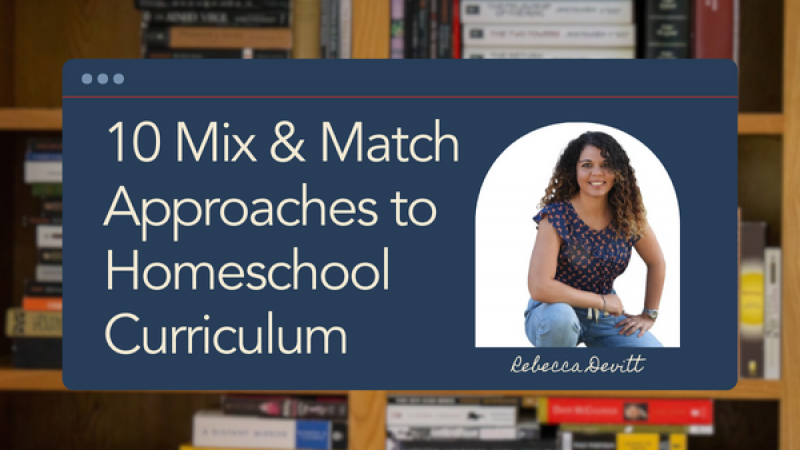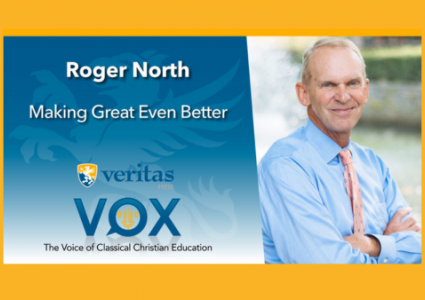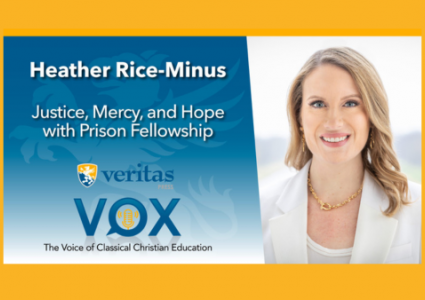10 Mix & Match Approaches to Homeschool Curriculum by Rebecca Devitt

The beauty of homeschooling is the diverse array of curricula to choose from. Homeschooling gives you the opportunity to choose a curriculum based on your family’s unique needs, values, and goals. With each option comes both distinctive advantages and, sometimes, disadvantages.
#1 Spiral vs. Mastery Approach
Imagine learning as building a tower of blocks. Those blocks can be laid in different sizes, shapes, and times, but a building needs to be built at the end of the day.
Spiral-based learning emphasizes understanding the big picture of a concept first, then gradually revisiting and expanding upon those ideas with more advanced content as time goes on.
Mastery-based learning focuses on building knowledge by breaking down a subject into its smallest components and mastering each individually before moving on to more complex concepts.
Both approaches will have your student knowing the bigger picture and finer details by the time they graduate high school, but will get them there entirely differently. These two very different approaches are most noticeable in math curricula.
What’s better? Neither! Some kids find the spiral approach hard because the concepts pop in and out of their lessons as the curriculum slowly “spirals” toward complete understanding by the end of the school year. Your student may not enjoy getting a general overview of a concept and then moving on to the next one before they feel “ready.” However, some kids would love to take it easy as new concepts are introduced, giving their brain time to process a new concept, knowing they’ll return to it later.
The mastery approach may feel like busy work at times because there’s lots of work assigned to help the student master a concept, knowing they will be expected to fully understand the concept as they build on the next (this is especially true in math). A nice thing about the mastery approach is if your student is naturally inclined to specific concepts, it’s quick to see, and you can move on faster. Alternatively, if your student is clearly not comprehending a topic, you will know to slow down and stay there for a while.
You can read more on the spiral vs. mastery approaches here.
#2 Open and Go vs. Setup Curriculum
Some curriculum is ready-to-use, while others require some prep time before you start.
Open-and-go options offer daily lesson plans and materials prearranged for convenience. At first, you’d think this would be the best option, but one downside is it’s hard to customize lessons. They tend to be less flexible, and it can be hard to allow yourself to skip lessons that are just sitting there in the lesson book, ready to be done when you know your kids really don’t need to do a particular assignment.
On the other hand, curricula that require a little more setup often provide more flexibility and allow for personalization, but, it can take a considerable time to set it up – like having to print out papers, organize notebooks, and write up your own schedule for the year to make sure you complete the work before the end of the school year. This can be annoying and take precious time out of your day.
Parents weighing the pros and cons of both can very well come to different conclusions about which is better for them.
#3 Online vs. Offline Learning
Online learning offers interactive content and virtual classrooms with students who can be from around the world- giving a truly world-class education with student discussions outside of your local circle and instant feedback. Online learning also decreases paper waste. It may or may not reduce shelf space, depending on the program. At Veritas, students still work from textbooks and workbooks, and if in the Omnibus courses, they will read 25+ books a year! There is also automatic record-keeping which decreases the time parents have to spend on tedious marking sessions. This is something I love about Veritas Scholars Academy!
On the other hand, an offline homeschool curriculum lends itself to more hands-on activities and, of course, not sitting in front of a screen, if that’s important to you.
In my homeschool, I use a mix of both (called a blended learning approach).
#4 Accredited Curricula, Accredited Schools, and Non-Accredited Curriculums
Accredited curriculums are created based on official guidelines of the chosen governing accrediting association. There are many different associations with varying degrees of accreditation. Getting an accredited curriculum to do with your children at home means there is a specific scope and sequence of academics that you are guaranteed to cover. You can not get an accredited high school diploma by using an accredited curriculum at home. An accredited school must oversee your student’s learning to get the accredited diploma.
Accredited Schools may or may not use an officially stamped accredited curriculum, but because the school must teach within the accredited parameters, the class will be accredited. (You could technically purchase any book on Amazon and, with an accredited school, make the class accredited based on the homework and depth of study of any given book).
If you want an accredited high school diploma, you must be enrolled in an accredited institution. That could be a co-op, online school, or in-person school. Just because a school exists, has online classes, or is a private school does not automatically mean it’s accredited.
Non-accredited curricula are any informational books you choose for your school day. It provides freedom to choose what will be studied (at Veritas Scholars Academy, you must take Latin- that might not be your jam!) You will have to do more research to know the scope and sequence of what your kids are learning. That can be a real joy to be super involved and able to curate the perfectly suited school year for your kids without anyone telling you you have to teach something specific.
While you don’t need an accredited diploma to graduate high school or necessarily need one to get into a local or state college, it is the best option if you hope to gain college scholarships, attend a mid-level or Ivy Leauge college, or prefer guidance on how to complete all the subjects your state requires to graduate.
#5 Classical vs. Traditional/Modern Curriculum
Classical education emphasizes the pursuit of truth, goodness, and beauty through the trivium (grammar, logic, rhetoric). In classical education, you will study Latin, logic and rhetoric, and read an extraordinary number of books from what classical educators call “The Great Books.” Ancient and modern books that are of the highest quality and offer thought-provoking conversation, which students are taught using the Socratic method. Ensure you get a Christian classical curriculum, as there are plenty of classical programs that have completely separated themselves from the Bible.
This is contrasted with the traditional/modern method, which will not offer any of the above subjects mentioned. Although there will be some crossover of quality literature, those in the traditional approach will read the books for a book report, not to have a healthy debate about the ideas covered in the books.
Veritas Press offers a wonderful classical Christian curriculum and is one of my top picks.
#6 Secular vs. Bible-Based Curriculum
The curriculum path diverges into secular and Bible-based options.
Secular curricula focus on academic subjects without religious affiliation.
Bible-based curricula integrate faith, weaving Christianity into all subjects, and fostering a holistic understanding of the world.
Veritas Press is one of the best Christian homeschool live online programs. Children will learn about the Christian faith, praying before lessons and learning how to integrate their faith into everyday life.
You can check out Veritas’ beliefs here.
#7 Self-Paced vs. Structured Learning
Picture a road trip with stops along the way or a guided tour. Self-paced curricula allow students to explore subjects at their own speed, promoting self-discipline and independence. Structured curricula offer a clear roadmap, ensuring topics are covered systematically.
Veritas Press gives you plenty of options here. You can choose between:
Self-Paced courses
Live online courses
Offline Teach-It-Yourself curricula
They each have different price points, as we’ll look at further down the page.
#8 Literature or Narrative-Based vs. Traditional Curriculum
Literature-based programs use captivating tales to teach concepts across subjects, fostering a love for reading and critical thinking.
Traditional curricula focus on textbooks and structured learning, catering to different learning styles.
Classical programs like Veritas Press tend to use what’s called Great Books that teach through many literature/narrative-based stories. They use textbooks as their spine to the reading of great literature throughout the school year.
#9 Hands-On vs. Non-Hands-On Approach
Consider tangible experiences vs. abstract learning. The hands-on approach engages through interactive activities, while the non-hands-on approach emphasizes theoretical concepts.
Both have pros and cons, and the choice of which to use very much depends on what will suit your family and particularly your child[ren] best. This can be played out in a myriad of practical ways. For instance, whether learning online or around the dining table, students and teachers (or mom and dad) can have an abstract lesson, followed by a hands-on activity.
If your kid really doesn’t like getting messy, you may stick to abstract concepts. Or if your kid lives for projects, you focus on those.
#10 Budget-Friendly vs. Premium Curriculum
It’s important to explore options within your budget. Budget-friendly curricula offer cost-effective resources, while premium choices provide tailored, high-quality experiences.
While you can get a free homeschool curriculum, remember you’ll be using the program for many hours during the day. So you want it to be a good one!
Just because it’s expensive doesn’t mean it’s better than a cheaper option. Usually the more expensive, the more accountability it offers.
Veritas Press offers many different choices when it comes to the budget.
Their Teach-It-Yourself option is the most cost-effective solution. You can even purchase used books on eBay or in a Facebook group dedicated to Buy/Sell/Trade.
Live classes will of course cost a lot more because you are paying for a teacher to curate lesson plans, teach your student, and grade their homework.
If you’re looking for a mid-level option, their online Self-Paced courses automatically grade your students’ work and teach them lessons through videos (plus games and songs for younger learners). Currently, these courses are available for 2nd-6th grade History and Bible and for 7th-12th grade Omnibus classes.
Conclusion
As you navigate the myriad of Christian homeschool curriculum options, remember that there's no one-size-fits-all solution. Your family's values, educational and lifestyle goals, and preferences will guide your choices.
Whether you choose an accredited online option or a free at-home one, Chrisitan curricula or secular curricula, a budget-friendly approach, or something more premium, embrace the joy of tailor-made education and watch your children flourish!
If classical Christian education sounds like a good path for your family, check out my in-depth Veritas Press review here.

Rebecca Devitt is a Christian home education author and blogger. She runs the How Do I Homeschool blog and YouTube channel where her goal is to help parents homeschool joyfully and save time, money, and trouble.






